How to go green with laundry? What are sustainable laundry practices? According to Energy Star, an average family uses about 51,102 litres water for laundry every year. When a family washes and dries about 5 kg of laundry every other day, that family creates about 440 kg of CO2 emissions per year, as stated in an article in The Guardian. It is thought-provoking to recognise that a task as mundane as laundry has such a large impact. In particular, when we also consider microfibre and chemical pollutions. Yet as in the case of efforts to save electricity at home, seemingly tiny changes can make an important difference.
Hang it out to dry
Reading more about environmental impact of laundry, I was happy to learn that by having resisted using dryers, I had made a good choice for our planet. Charlie Bradley Ross writes that when using an average wash at 40 degrees, 75% of CO2 emissions are due to the tumble drier phase. The above-mentioned The Guardian article also states that “a household running a dryer 200 times a year could save nearly half a tonne of CO2e by switching to a clothes rack or washing line.” Just by skipping the dryer, we can make a huge impact.

Switch to an energy-efficient washing machine
After this positive revelation, I got bad news. I realised that our washing machine is not very energy- and water-efficient 
However, as discussed in my post on changing my coffee and tea habits, my principle is not to consume more because of my green journey. When my washing machine breaks down, I will make sure to buy an energy-efficient one that also reduces water waste. Until then, there are many other steps that I can take. Last week we focused on the following sustainable laundry practices:
Use concentrated maxi versions and green laundry detergent
There were times when I never bought maxi versions of things. Before I had children, I thought short-term: a smaller package or bottle is cheaper 

Sustainable laundry: wash clothes in colder water
In my mind, for some reason, I always thought that the warmer the water, the cleaner the laundry. I guess this came from thinking that very warm water kills microbes more effectively. By seeing that very hot water destroys many fabrics, I have become more reasonable about using it. Yet I still definitely had room to improve! Terri Williams in her blog post on how to lower your power bill suggest to use cold water that is sufficient to clean most laundry. I thus decided to reduce heat for each load by going down 10 degrees. It meant that for white bed linen with some “pipi accident” from my little one, I used 50 degrees instead of 60. For other coloured laundry, I decided to use 30 degrees instead of 40 degrees.
According to The Guardian, CO2 emissions for a 5kg load of laundry are “0.6 kg CO2e washed at 30°C, dried on the line” and “0.7 kg CO2e washed at 40°C, dried on the line.” Since I have three boys who climb trees almost every day, this difference of 0.1 kg per laundry load means reducing my carbon emissions by about 36.6 kg per year. All thanks to this small adjustment of my washing machine!
Don’t pre-wash
I did not use this option often, but I have sometimes done it for bed linens. I guess this choice came from the mindset that “more is better,” and I have realised that this is not the case. EcoExpert Claire Delaney suggests skipping pre-washing. Last week I thus washed white bed linen with my little one’s pipi accidents, and the sheets came out all clean. As of now, this button on my washing machine is barred
Use a bit less spin speed, and don’t use “super rinse”
As with washing in colder water, this meant just a tiny change: to diminish the spin speed by one option, and not to push the “super rinse” button. I was afraid that the laundry would remain too wet and get a mouldy smell if I did not spin cotton clothes at high speed. This was not the case. Using very eco-friendly detergent also automatically made me avoid the “super rinse” button. I used to select this button because I thought it would help to eliminate the chemical substances from fabrics. I tried both options out, and the results were great – small changes, but some energy and water saved!
Sustainable laundry: avoid more half-empty loads
With my three musketeers and the wild garden, half loads are not a pressing issue, as I have more than enough dirty clothes to wash 
How to go green with laundry: make your own detergent
My husband, who used to work for Ariel, always told me that washing powder is great for whites, but washing liquid was better for coloured clothes. Yet I was not able to find a washing liquid without plastic packaging. On the suggestion of Treehugger and according to the Kaizen-magazine.com recipe, I thus made my own liquid detergent. I tried it out and was very happy with the result! The final product is presented in one of the featured photos of this post (the beautiful painted bottle was made by my son Lev as a gift for me:-). Below are two pics of the ingredients that I used

…. and where I mixed them.

Wash clothes by hand if there are only one or two spots
Before, if one of my sons spilled something on his T-shirt at breakfast, I used to take the easy way by throwing the shirt into the dirty laundry basket. This week, I decided to change that. If it is a clean T-shirt that my son just put on before spilling something on it, I would wash the spot out by hand. I put natural soap for that in the kitchen to make it easy to do it right away. In general, if a garment is otherwise clean, I now opt for washing stains off of it by hand.
CHALLENGES
One of the reasons why I did not wash clothes by hand before is that the detergents that I used were so full of chemicals that my hands were destroyed every time. Now that I have opted for natural soap, my hands are just fine! I no longer have any reservations about washing clothes by hand 😊
HIGHLIGHTS
The beautiful consequences of starting and blogging about my green journey appear in so many unexpected ways in my life.
Our little Rick had his birthday party to celebrate turning two years old, and
• most gifts our son received for his birthday were made from recyclable materials!
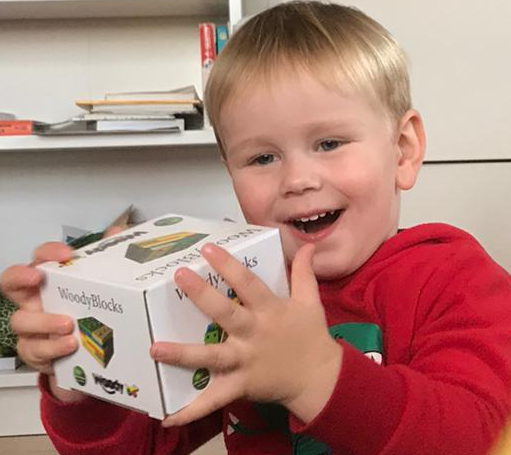
Without us saying anything about it, thanks to my blogging, our friends knew about our decision to live a eco-friendlier lifestyle, and they surprised us by adapting to it. Thank you Mayu Suzuki for capturing the moment!
My husband also said that since our recycling week changes,
• our family has reduced our garbage by more than half, and now we only need to put out the garbage container every two weeks.
I do not think it was due to our experiments during the electricity saving week, but my computer broke down🙁 Usually, in this case, I would just go to Apple to buy a new computer the next day. I would never have thought that one day I would
• buy a secondhand computer
through the www.backmarket.fr I was impressed with their delivery time and service!


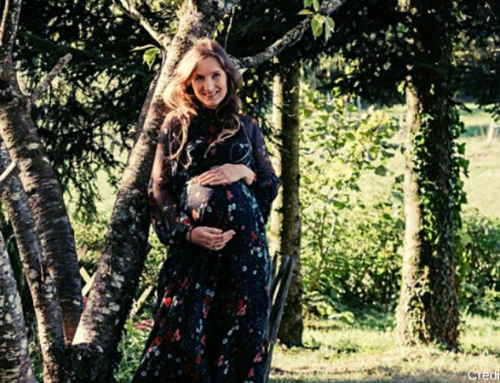

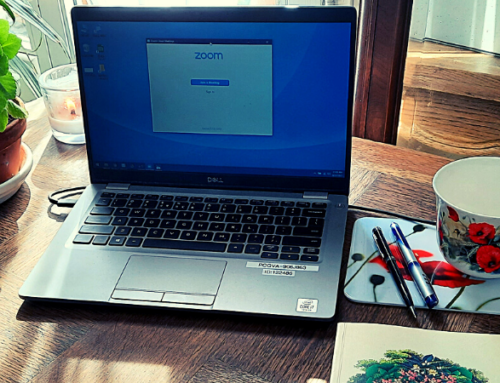

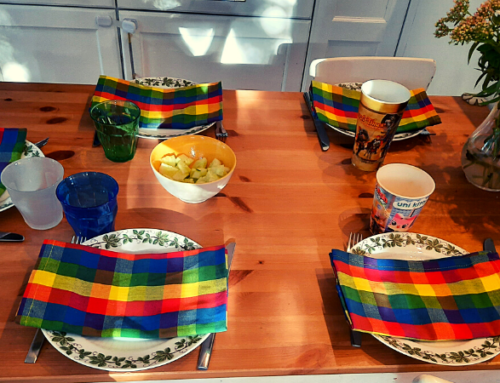
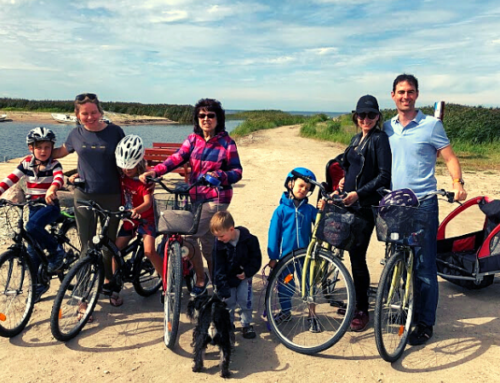
I read you as often as I can, congrats you’re doing so welll. Nathalie
Thank you Nathalie! One day at a time!
It’s simply great all the effort you make and the stunning results in such a short time.
The only thing I can think of adding, is that I simply wear my clothes much longer before washing them. Before I would change jeans and tops every day.
Thank you Maya for your feedback! I used to also change clothes every day and have been also exploring with wearing them more than once. Works well with me and starts to work with Lev, but Rick and Max still manage to get a lot of food on their clothes:-) And both refuse any protection…